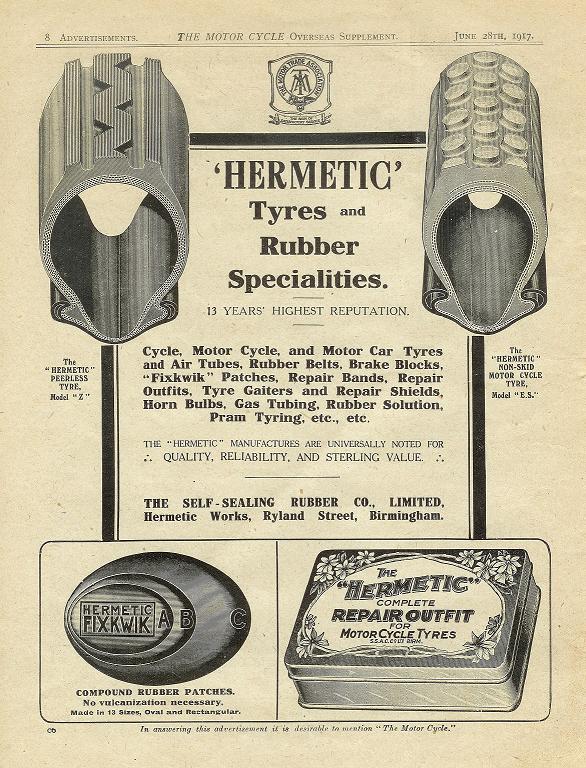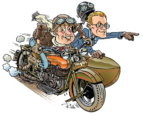The Mechanics –
To appreciate the enjoyment of riding vintage machinery an understanding of the basic differences within the design of veteran and vintage motorcycles is required –
Oiling systems.
With the exception of a few machines most pre 1929 motorcycles have a ‘total loss oiling system’ (oil doesn’t have a return feed to the oil tank).
There may be a need in certain circumstances to supplement the main oil supply with an extra charge of oil into the engine from the ‘Auxiliary Hand Pump’.
Delivery and control to the engine is by several methods –
Hand pump and sight glass – oil is feed through the manually operated hand pump to the sight feed glass for regulation of 1drip about every 1~3 seconds (varying on different machines)
Vacuum and sight glass – oil is drawn from the oil tank by engine crankcase vacuum through the sight feed glass with a regulation of 1drip about every 1~3 seconds (varying on different machines)
Oil Pump and sight glass – hand pump is replaced by a mechanical pump which pumps oil to a sight feed glass with a regulation of 1drip about every 1~3 seconds (varying on different machines)
Oil Pump – hand pump is replaced by a mechanical pump which pumps a controlled measure of oil direct to the engine but still with a regulation of 1drip about every 1~3 seconds (varying on different machines)
Braking Systems.
These are broken down into the following types –
Stirrup Type – similar to types on modern pushbikes, used mainly on the front of early pre 1915 type machines. Efficiency Rating Poor (especially on painted or nickel plated rims.)
V Rim Brakes – A V block of brake material is applied into a Belt drive rim (on belt drive machines) or a dummy v rim (on chain drive machines). Used on most veteran and vintage rear wheels, and on some vintage front wheels. Efficiency Rating Below Average (even less when wet).
Drum Brakes (2 types)
External Contracting Band – Used on early American machines (Harley Davidson pre 1930) and some English machines. Either a one piece or split 2 piece band lined on the inside with brake material that tightens around the brake drum. Efficiency Rating Average to Good
Internal Expanding – Either a band or brake shoe type. Efficiency Rating Average to Good.
Engine Braking
Used with operation of the valve lifter. Used with the engine in low gear on steep descents.
Remember – Plan well ahead when riding. Older machines don’t have the braking power of ‘moderns’ and so DEFENSIVE RIDING is of the utmost importance.
Basic Gear Systems.
Fixed Wheel Single Speed – rear wheel is directly connected to the engine via a V belt (no clutch).
Free Wheel Single Speed – rear wheel is directly connected to the engine via a V belt but has a clutch in either the rear wheel or in the engine pulley.
Free Wheel MultiSpeed – rear wheel is directly connected to the engine via a V belt but has either a 2 or 3 speed gear system in the rear hub (BSA, Sturmey Archer, Harley Davidson)
Variable Drive Engine Pulley – engine pulley can be adjusted to change overall drive ratio. Basic types have to be adjusted while the bike is stationary and engine switched off, more advanced types can be adjusted whilst motorcycle is being ridden (eg Phillipson pulley, Zenith Gradua System).
2 Speed Countershaft – no gearbox but machine has 2 different primary drive ratios (2 primary chains) which are selected via a ‘Tram Handle’ or rocker pedal (Royal Enfield)
Gearbox – 2 or 3 speed, with or without clutch.
Carburetion –
Schebler, Binks, Brown and Barlow, AMAC, and AMAL were just some of the many suppliers to the motorcycle industry. As technology quickly evolved in carburetion so did the upgrades to manufacturers products as they strived to obtain the best performance for their customers motorcycles. Some motorcycle manufacturers chose to produce their own which resulted in unusual carburetors like BSAs 2 barrel model, and Triumphs 2 piston model. Racing also produced higher performance carburetors such as Scheblers Barrel Carburetor, AMAL and AMACs TT carburetors and the very unique Binks Mousetrap carburetor. Generally though carburetors can be categorized into 3 types-
Surface Carburetor – first and most basic type of system used on mostly pre 1905 machines.
Piston Type – variations include the plain jet, the variable jet, the 2 jet and the 3 jet models. Used extensively on british motorcycles.
Butterfly type – used mainly on American motorcycles. Was advanced for its time compared to its british counterpart.
Ignition Systems.
Hot Tube – Very early edwardian veteran motorcycles
Magneto – Pre 1912 open type magneto non waterproof, mounted inside a waterproof case.
1912 onwards newer waterproof type. Basically remained unchanged in design from this point.
Coil – As per modern points/coil systems. Very popular and reliable on Harley Davidsons from 1916 onwards.
Handle Bar Controls.
LH Side –
Clutch lever – if fitted
Valve Lifter (Decompressor Lever) – Fitted in most cases
Ignition Advance Lever – lever types or twist grip (American motorcycles)
Throttle Air Control – on some models
Oil Pump Auxilary Hand Lever – some models
RH Side –
Front Brake Lever – if fitted
Oil Pump Auxilary Hand Lever – some models
Throttle Control Air Slide
Throttle Control Fuel Slide
Or a standard twist grip
Starting Systems.
Pedal – 1st and most basic system used on very early machines with fixed or free wheel machines where the bicycle pedal gear is used to start the engine as well as assist the machine up steep inclines. Achieved by pedaling with the valve lifter operated and then released when optimum pedaling speed is reached (quite difficult with Fixed Wheel Single Speed machines).
Paddle/Push Off – commonly where a low gear is selected, throttle lever positions selected, valve lifter or decompresser operated, and the machine is paddled away. After a few steps the valve lifter/decompresser is released and (hopefully) the machine will start. Is easier if the rider is tall and can sit astride the machine otherwise the rider has to push from aside the machine.
Handcrank – machine is manually cranked with the valve lifter operated, by a handle from under the seat. When the required cranking speed is reached the valve lifter is released and the engine will start.
Kickstart – the norm adopted by the motorcycle industry in the early 1920s and remains unchanged to this day.
Wheels –
Most are of a standard spoke type however there is a variation with rim types. Earlier pre 1928 machines were originally fitted with Beaded Edge type rims. This is where the tyre clips into the edge of the rim. There are still a few machines fitted with these rims and the main awareness is of the tyre pressures. Too lower pressure and the tyre can roll off the rim. Normal pressure is around 40~50 psi (varying on size of machine)
IMPORTANT Dos and Don’ts.
Dos.
– Take time out to familiarize yourself with each machine, and that the correct fuel and OIL taps ARE switched on. Some machines can have up to 3 oil taps that require attention at some stage during riding.
– Always turn petrol and oil taps OFF when finished riding (older style taps always weep especially petrol taps which could be a fire risk).
Don’ts.
– Never sit on a vintage machine while it is on its rear stand. They are of light construction and are to support the motorcycle only and so THEY BREAK EASILY.
– On Magneto motorcycles never kick the engine over with the spark plug lead disconnected. Always earth the lead to the motor to stop magneto damage.
Caution – Pre 1928 motorcycles (and a few up to 1938) have soldered petrol tanks which are aging and can leak unexpectantly. Unless the tank has been resoldered in the last 10 years a valuable addition to the tool kit is a fire extinguisher.

